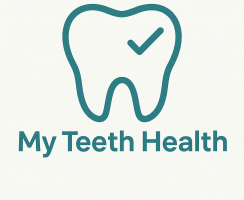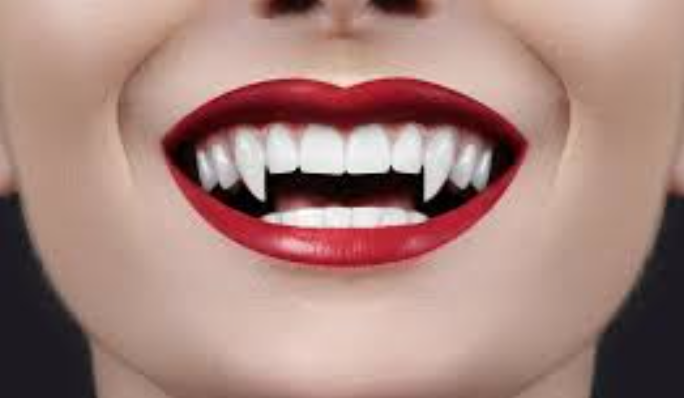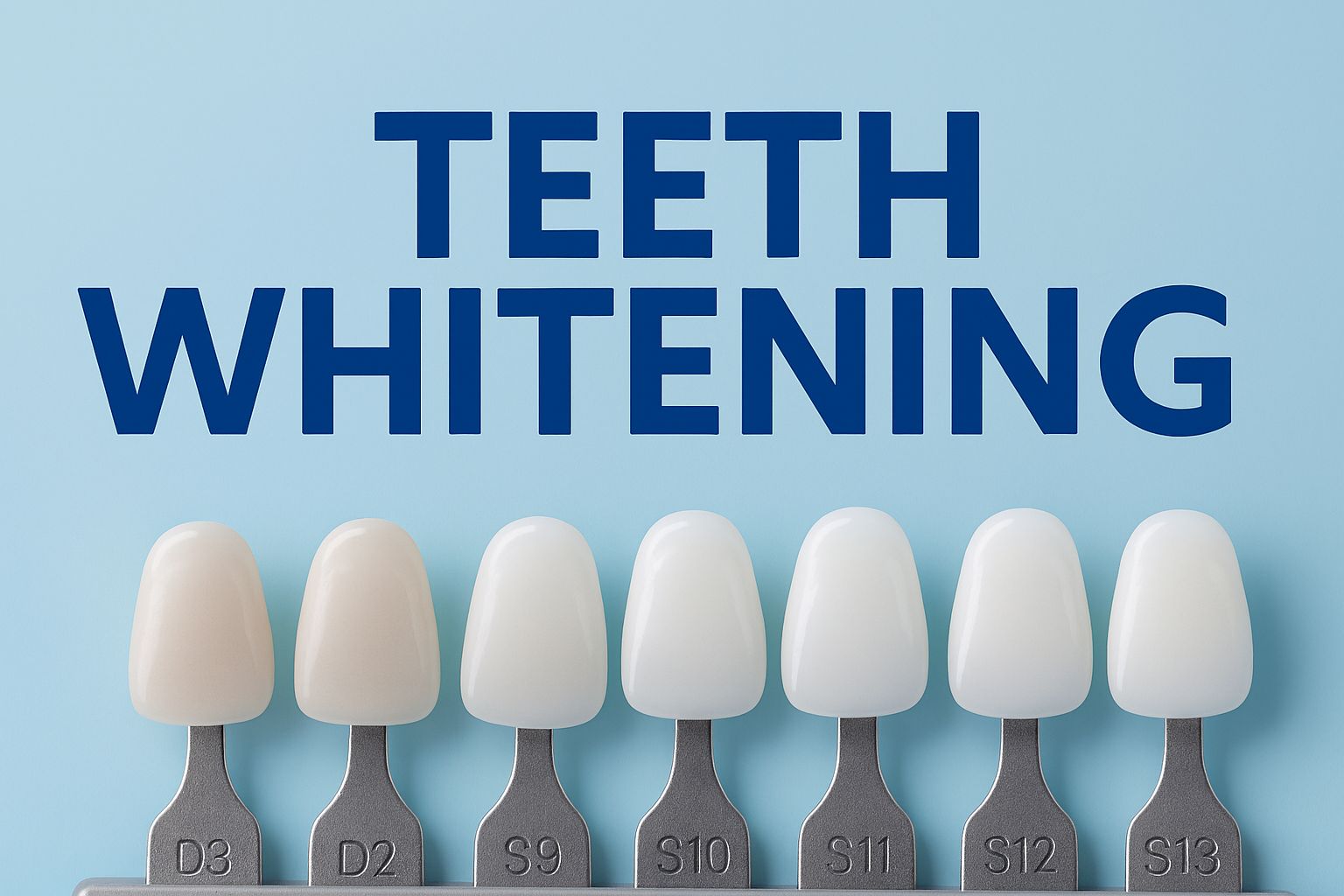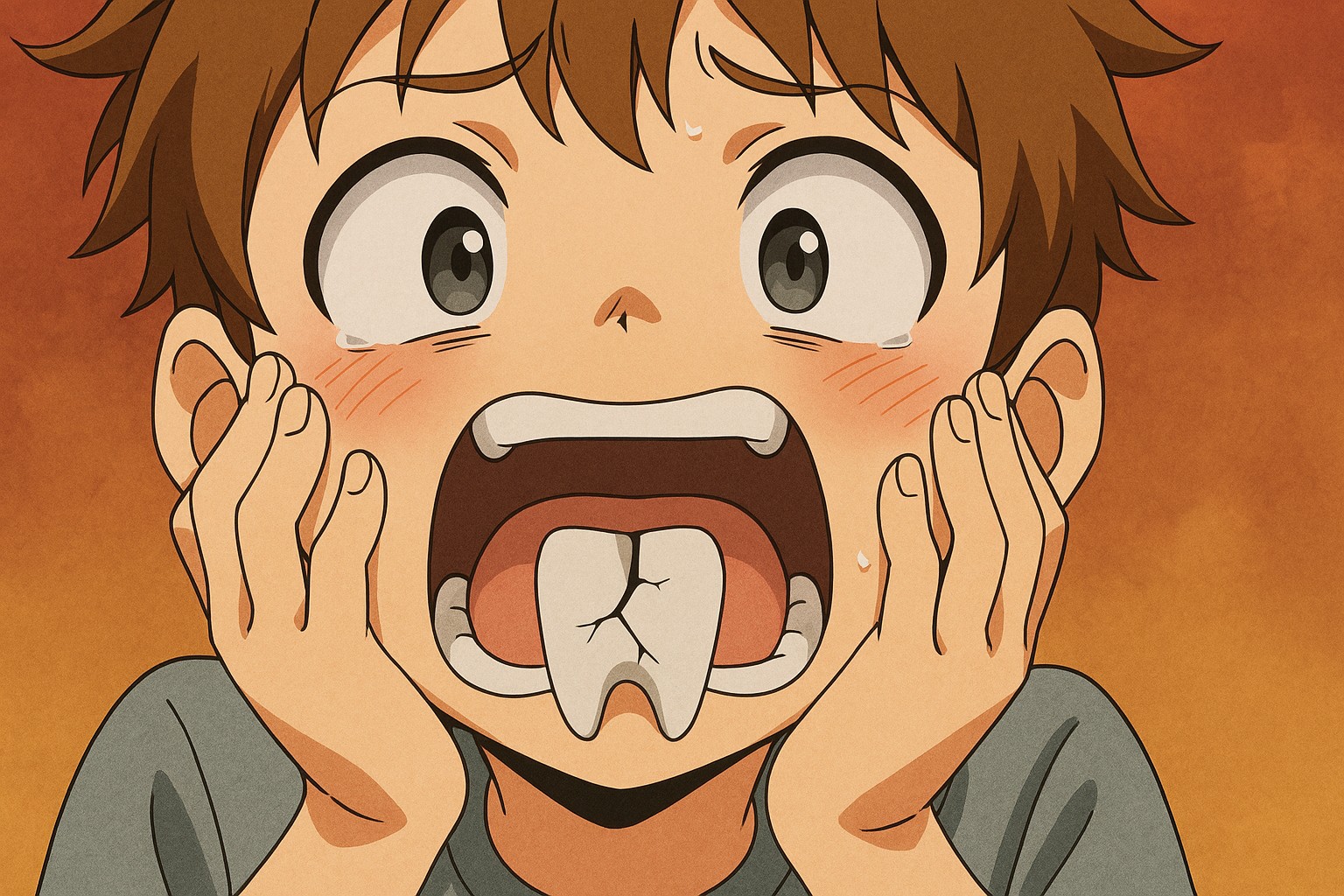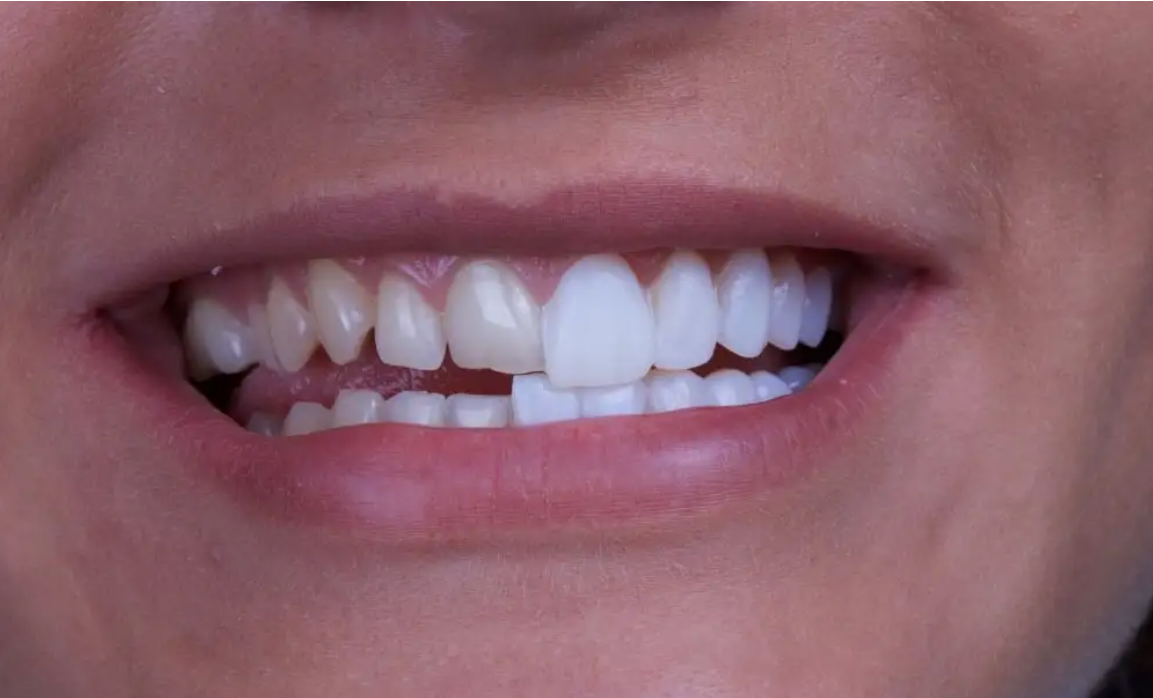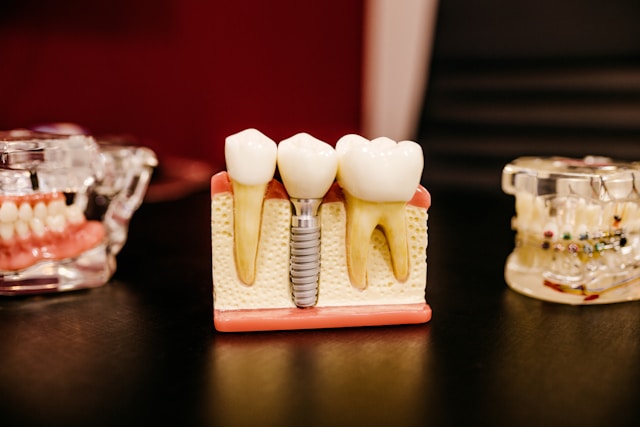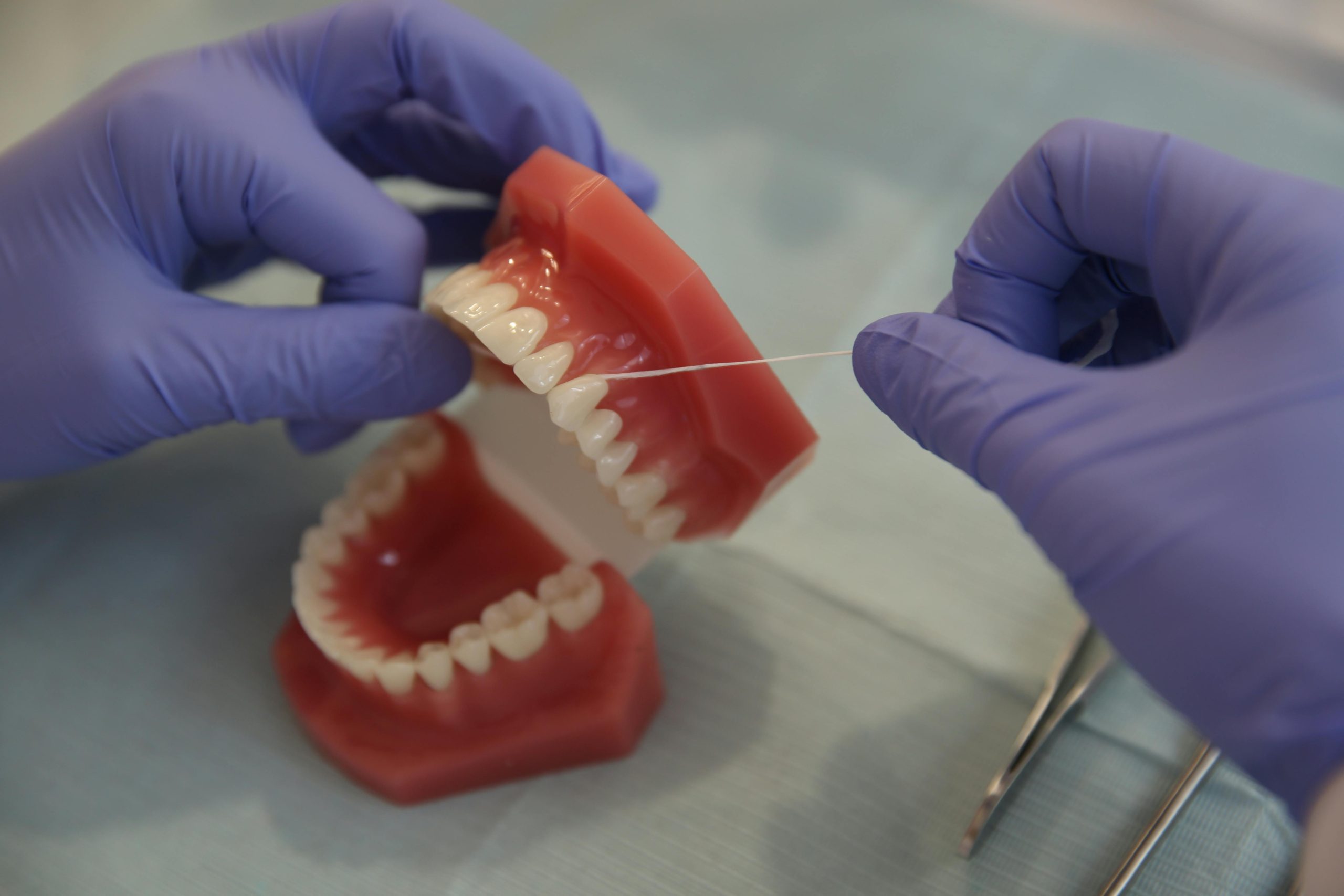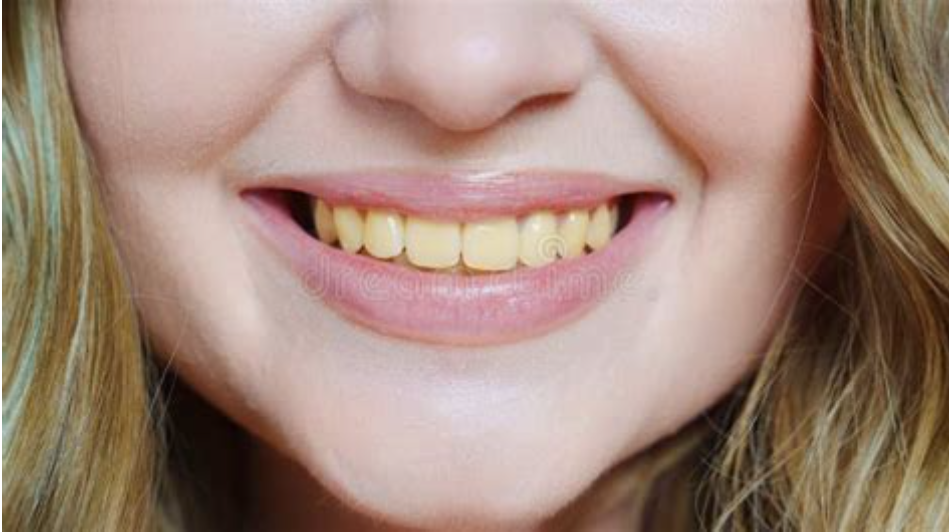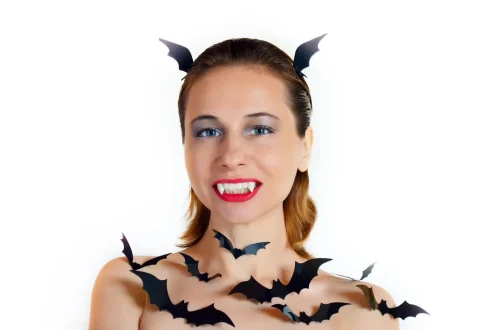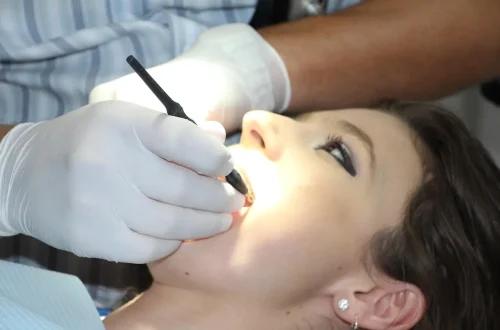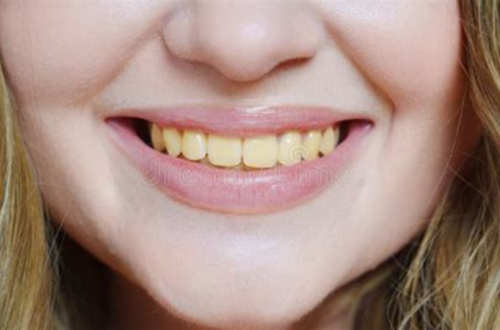Imagine looking in the mirror and noticing that your smile could use a little… bite. Do you ever wonder if your canine teeth could be turned into pointed vampire fangs? Simply for personal expression, the idea of sharper canine teeth comes to your mind.
So, can you turn your canine teeth into vampire teeth? In this article, I’ll give you the answer.
What Are Canine Teeth in Humans?
Canine teeth are the sharp, pointed teeth located at the ends of your dental arch. They sit right next to the lateral incisors and before the premolars. In a full set of adult teeth, there are four canines: two in the upper jaw and two in the lower jaw.
Function and placement of human canine teeth
From an anatomical viewpoint, the canine teeth in humans serve several important roles. First, their long root length and conical shape allow them to absorb and distribute lateral (side-to-side) chewing forces more effectively than incisors. As such, the canines are sometimes referred to as the “cornerstones” of each dental arch.
Each canine sits in the third position from the mid-line (central incisor, lateral incisor, then canine). That holds true for each quadrant of the mouth.
Further, they play roles in guiding occlusion (how your upper and lower teeth meet) and support the arch form and smile aesthetics. Because of their position and shape, they also influence how the facial structures (like the cheeks and lips) appear. For example, celebrities like Angelababy and Li Bingbing have prominent, well-shaped canine teeth that contribute to their distinctive smiles and facial harmony, enhancing the contour of their cheeks and the elegance of their lip line.
| Feature | Typical human value | Function or significance | Source |
|---|---|---|---|
| Number in adult mouth | 4 (two upper, two lower) | Serve tearing and arch guidance functions | Cleveland Clinic |
| Root length (upper canine) | Longest root among anterior teeth | Anchors the tooth firmly; resists lateral forces | Pocket Dentistry review |
| Single cusp (cusp tip) | 1 | Unique among anterior teeth; pointed tip helps tear food | Wiki (Canine tooth) |
Why Do Humans Have Canine Teeth?
Historically and evolutionarily, the human canines are a hold-over from our mammalian ancestors. They resemble, in miniature form, the large “fangs” found in carnivorous species. However, over time, human canines have become less pronounced (less than many primates). As humans began using tools and changing their diets, the need for strong, sharp teeth for tearing food became less essential, reducing their prominence.
Though they no longer serve the dramatic tearing role they once might have, human canine teeth still provide functional advantages. They help with biting into tougher food, guiding the rest of the dentition into correct contact when you chew or swallow, and contributing to the aesthetics of the smile. They also help maintain the shape of the dental arch and prevent adjacent teeth from drifting.
Why Do People Want Vampire Teeth?
The desire for vampire teeth — that is, pointed, elongated or intentionally sharpened canine teeth — stems from a mix of aesthetic, cultural and psychological factors. Here are the most common motivations.
The Custom of Teeth Sharpening
The practice of teeth sharpening has been a traditional custom in several African cultures. Historically, it served spiritual, cultural, or social identity purposes. Today, it is mostly aesthetic, considered an extreme form of body modification.
This ritual is common among the Makonde people in southeastern Tanzania and northern Mozambique. It is also found in ethnic groups in the Democratic Republic of Congo. This includes the Bopoto and Zappo Zap peoples. Some tribes in the Central African Republic practice it too. The Bemba in Zambia and the Yao people in Malawi and Zambia also take part in this ritual.
Among these groups, the motivations vary. For some, it marks the transition into adulthood during puberty rites, demonstrating the individual’s ability to endure pain. In other tribes, it is a customary expectation performed at a specific age. In Sudanese tribes, teeth sharpening is believed to provide spiritual protection or prepare individuals for leadership roles. Among the Pare in Tanzania, sharpened canine teeth symbolise masculine traits, while in the Upoto of central Congo, males sharpen only one tooth and females multiple teeth before marriage. The Makonde often perform it primarily among women as a symbol of beauty.
Pop culture influence (Halloween, cosplay, gothic aesthetics)
Popular media — films, TV series, vampire literature, cosplay communities, and Halloween culture — normalise the idea of pointed canine teeth. Fans and performers often want realistic fangs for authenticity in costume or for a permanent look in line with a gothic or alternative identity. For example, dramas like The Vampire Diaries, Twilight films, and Asian series such as Blood-C or Vampire Detective showcase characters with sharp canine teeth, inspiring audiences to emulate the iconic vampire aesthetic.
The appeal of more pointed canine teeth
Pointed canine teeth really change the look of a smile, giving it a bold and expressive vibe. For a lot of people, getting this transformation reflects their unique style, a bit of an edgy personality, or even a connection to a fantasy or gothic aesthetic. It’s interesting how the blend of appearance, influences from media, and personal expression is fueling the rising trend of vampire-like fangs.
Are Pointed Canine Teeth Safe?
It’s tempting to focus purely on appearance, but safety is paramount. Whether you’re using temporary fangs or permanent dental work, you must understand the risks.
Tooth enamel damage from reshaping
A critical issue arises when modification involves removing enamel — the hard outer layer of the tooth crown. Enamel is the hardest substance in the human body, but it does not regenerate once lost.
When enamel is reduced for reshaping or for placing veneers, you increase the risk of sensitivity, decay and structural compromise. For example, veneer preparation typically involves enamel reduction — even “minimal” removal is irreversible.
Bite alignment issues and chewing discomfort
The canines play a key role in guiding the jaw during lateral movements (often referred to as canine guidance). If you change their shape significantly without evaluating the occlusion (how your teeth bite together), you may cause misalignment, uneven wear, temporomandibular joint (TMJ) issues, or discomfort when chewing or biting.
Long-term maintenance and dental check-ups
Any cosmetic dental work requires ongoing care. For temporary methods that create pointed canine teeth, you’ll need to manage fit, hygiene and removal. For permanent procedures like bonding or veneers, you must schedule regular check-ups to monitor for cracks, loosening, staining, gum-health around the restoration, and the continued integrity of your bite and supporting bone or root. Patients should anticipate replacement or touch-up at some point. For instance, composite bonding generally lasts 3-7 years, while porcelain veneers may last significantly longer under ideal care.
How to Turn Normal Canine Teeth into Vampire Teeth?
Now that you understand the anatomy, motivations and risks, let’s look at how one might go about achieving the pointed “vampire” look for the canines. I’ll divide the methods into temporary and permanent, so you can choose according to your objectives and risk tolerance.
Temporary Methods for Vampire Teeth
If your goal is short-term — for a costume party, a special event or occasional wear — there are low-risk and reversible options.
Custom vampire tooth caps and veneers
These are custom-made prosthetic caps or veneers that fit over your natural canine teeth. They’re often crafted in acrylic or resin and colour-matched. They are removable, making them much safer for first-time experimentation. When professionally made and correctly fitted, they can appear quite realistic and cause minimal interference with your bite — for the limited time you plan to wear them.
Clip-on pointed canine teeth for events
Clip-on vampire fangs are typically the most affordable and accessible option. They slip over your existing canines (and sometimes adjacent teeth) and may be thermo-moulded for better fit. These are ideal for one-off occasions but are not designed for long wear, chewing or sleeping. Poorly fitted options can irritate gum tissue or catch on soft tissues, and the fit may loosen over time.
| Option | Fit style | Advantages | Limitations |
|---|---|---|---|
| Custom caps | Bespoke to tooth shape | High realism; secure for event use | Higher cost; only for limited time wear |
| Boil-and-bite clip-ons | Semi-custom fit | Reusable; affordable | Fit may degrade; not for eating/sleeping |
| Generic clip-ons | One-size generic | Lowest cost | Poor fit; risk of falling out or irritation |
Permanent Aesthetic Dentistry Options
If you prefer to have pointed canine teeth as your everyday look, the more lasting procedures are the domain of experienced cosmetic dentists. These carry increased cost, planning and irreversible consequences. Always check credentials and ask to see examples of previous work.
Dental bonding to create pointed canine teeth
With dental bonding, composite resin is applied to the existing tooth, shaped into the pointed contour and then hardened (cured) with light. One advantage is that minimal or no enamel removal is needed (depending on the case). According to the Cleveland Clinic, bonding is generally safe for healthy teeth and gums, especially for cosmetic enhancements.
This method allows you to get the pointed shape, maintain most of your tooth structure, and potentially reverse or replace the bonding later. However, bonding is less durable than veneers, may stain over time, and may require more frequent maintenance or replacement.
Porcelain veneers for vampire-shaped canine teeth
Porcelain veneers are thin shells of ceramic that are bonded to the front and sometimes the sides of your canines (and often adjacent teeth) after preparation. Preparation usually involves removing a small amount of enamel — even “minimal” removal is irreversible. The procedure provides a highly aesthetic, long-lasting result. However, it carries permanent changes to the tooth and requires significant planning with your dentist.
Before undergoing any permanent procedure, your dentist should assess root length, pulp health, tooth vitality, existing wear or cracks, existing orthodontic and occlusal (bite) relationships, and discuss the implications of revision, maintenance, and cost. Failure to do so may lead to complications, including as outlined earlier.
Is transforming canine teeth into vampire teeth worth it?
The answer is “maybe”. To determine if it’s worth it for you, ask yourself the following:
- Is this look like something you want just for a short time (e.g. costume or event) or for everyday life?
- Are you comfortable with ongoing maintenance, future replacements and possible complications?
- If irreversible procedures are involved (enamel removal, veneers) — are you ready to commit long-term and aware of the consequences?
If you answered “short-term” to question 1, then a non-invasive option like clip-ons or custom caps is most appropriate. If you answered “everyday life” and are willing to accept ongoing care and cost, then a professional bonded or veneer solution could work — provided you choose a qualified dentist, get a thorough treatment plan, try a mock-up and clearly understand all consequences.
Finally — if you decide to proceed, make sure you research your dentist’s qualifications, inspect before-and-after examples of similar work, ask for a detailed consent form outlining risks (sensitivity, bite changes, maintenance, replacement cost), and clarify follow-up care. A well-executed procedure in the hands of a skilled professional can look great and be safe — but cutting corners or ignoring bite/anatomy issues can lead to long-term regret.
How to Recover Your Pointed Canine Teeth?
If you’ve altered your canine teeth — temporarily or permanently — and wish to restore their natural shape, there are several recovery approaches depending on the method used. Consulting a dentist is essential to minimise further damage and ensure predictable results.
Dental Bonding
If your pointed canine teeth were created with composite bonding, the material can usually be carefully removed and the tooth polished. Bonding is repairable and reversible, but if significant enamel was removed previously, additional restorative work may be required to restore the natural contour and protect tooth vitality.
Dental Veneers
For permanent alterations using veneers, reversal is more complex. Removing a veneer exposes a prepared tooth, which often requires a new veneer or crown. Full restoration to the original natural shape is rarely possible without further restorative treatment. Veneers are largely irreversible, so recovery often involves carefully planned replacement or complementary cosmetic procedures.
Tooth Reshaping
If enamel was removed to create pointed canine teeth, lost enamel cannot be naturally restored. Recovery may involve composite bonding or veneers to rebuild the original profile. Conservative reshaping by a professional dentist can refine the teeth gradually and minimise sensitivity or structural issues.
Conclusion
In summary, transforming your canine teeth into vampire teeth is very much achievable. You have options ranging from simple, reversible clip-ons to full cosmetic dental procedures. The right path for you depends largely on how permanent you want the change, your budget, how comfortable you are with maintenance, and how risk-averse you are.
Frequently Asked Questions — Turning Canine Teeth into Vampire Teeth
1. Can I get vampire teeth without damaging enamel?
Yes — if you opt for truly non-invasive options like professionally made removable caps or clip-on fangs, your natural enamel remains untouched. Among permanent options, composite bonding may allow you to add pointed shape without—or with minimal—enamel removal, depending on case-by-case. Always confirm with the dentist exactly how much enamel will be removed.
2. How long does composite bonding last if I shape my canine teeth into fangs?
Composite bonding for this use typically lasts about 3–7 years, depending on function, oral hygiene, diet (e.g., staining foods/drinks), whether you grind your teeth and how well the restoration is maintained. Regular dental reviews and avoiding heavy biting on the bonded tooth will extend its life.
3. Will making my canines pointed affect my bite?
Yes — potentially. The canine teeth play a key role in guiding lateral jaw movements and maintaining the “corner” of the arch. If you alter their shape significantly without a comprehensive bite/occlusion assessment, you may introduce uneven wear, altered chewing patterns, TMJ strain or discomfort. Speak with a dentist who considers not just the look but the function of the teeth.
4. Can I undo veneers or reshaping if I change my mind later?
Not completely. Once enamel has been removed (as is usually required for veneers or some reshaping), the change is irreversible. If you regret the look, you’ll likely need further restorative dental work (new veneers, crowns or bonding) to rectify the change. It’s essential to understand that the tooth will never be truly back to “untouched” natural enamel.
5. Are clip-on vampire teeth safe for children or for eating?
Clip-on fangs can be relatively safe for short-term wear (e.g. for events) but are not recommended for eating, sleeping or for young children (due to choking risk or ingestion). If children want a “vampire teeth” look, ensure the product is age-appropriate, supervised, and removed during eating or sleeping to reduce risk of aspiration or gum irritation.
References
- Kenhub. Canine Tooth Anatomy. 2025. kenhub.com
- Pocket Dentistry. Canines Overview. 2025. pocketdentistry.com
- Colgate. What is a Canine Tooth? 2025. colgate.com
- V C Dental. Tooth Anatomy Education. 2025. vcdental.com.au
- British Dental Association. Bonding. 2025. bda.org
- NHS. Dental Veneers. 2025. nhs.uk
- Colgate. Enameloplasty: Shaping Your Teeth. 2025. colgate.com
- Cleveland Clinic. Cosmetic Dentistry Overview. 2025. my.clevelandclinic.org
- Mostafizur’s Dental. Canine Teeth Function and Care. 2025. mostafizursdental.com
- Smile.com. Dental Veneers Overview. 2025. smile.com
